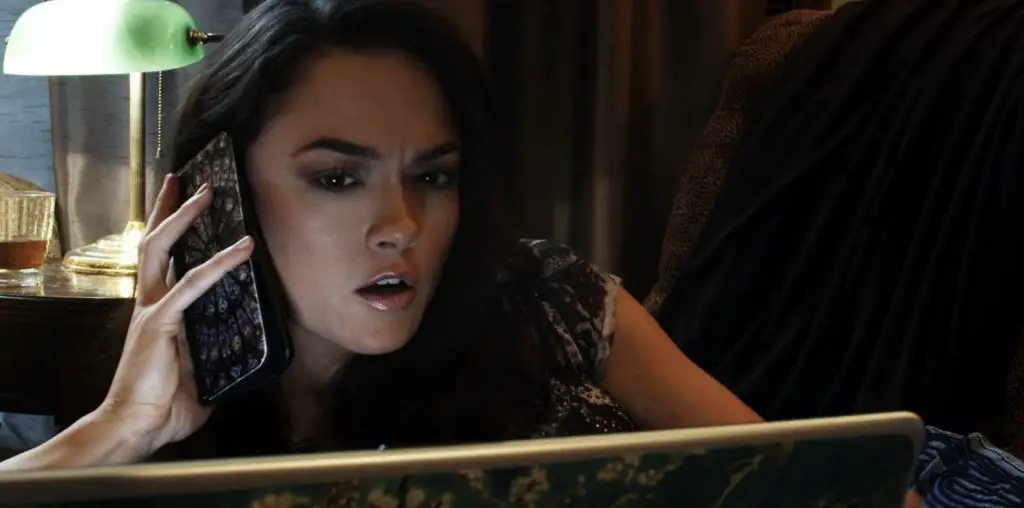
BOOTLEG FILES 267 “St. Louis Blues” (1929 short starring Bessie Smith in her only film performance).
LAST SEEN: The film can be found online.
AMERICAN HOME VIDEO: In public domain dupes only.
REASON FOR BOOTLEG STATUS: A long-expired copyright.
CHANCES OF SEEING A COMMERCIAL DVD RELEASE: Anyone who can get their hands on a print can make it available.
In music, a recording artist who turns up on the charts only once is called a one-hit wonder. There is no cinematic equivalent phrase, but film history is rich with intriguing personalities who wandered on camera only once. If there is a single artist whose one-hit wonder status in film history could make anyone rue for the lack of additional film work, it would be the legendary Bessie Smith, dubbed the “Empress of the Blues” with little exaggeration.
Bessie Smith comes to today’s film audiences through a 1929 short called “St. Louis Blues.” It is not, by any stretch, a great film. An argument can be made as to whether it deserves to be called a good film. It is listed on the Library of Congress’ National Film Registry, but I suspect that has more to do with the vibrancy of its star rather than the artistry of the production.
“St. Louis Blues” came about during the period when silent films gave way to sound pictures. At that time, it seemed that anyone who could sing, tell jokes fluently or speak English without sounding inane could get on camera and have a spin with potential movie stardom. Many vaudeville, recording artists and nightclub stars found themselves recruited for appearances in talkie short films.
In 1929, Kenneth W. Adams and W.C. Handy collaborated on the screenplay of a short film inspired by Handy’s popular song “St. Louis Blues.” The duo convinced RCA Phototone, an independent film production company specializing in sound films, to finance their short. RCA Phototone agreed, provided they could pick the director. Their choice was a curious one: Dudley Murphy, a former journalist who turned to avant-garde filmmaking. Murphy’s first production was the 1920 short “Soul of the Cypress,” but he was better known for the 1924 “Ballet Mecanique,” a French production that he co-directed by Fernand Leger (although in the years that followed, Leger’s role in the film’s creation received more praise than Murphy’s).
Adams and Handy agreed to Murphey, on the stipulation they could choose the film’s star. For them, the choice was obvious: Bessie Smith, based on her best-selling 1925 recording of the song. In June 1929, Smith traveled to a film studio in the Astoria section of New York City to face the cameras and the microphone.
Sadly, Adams and Handy trafficked in the negative stereotypes that reflected poorly on African Americans: their film opens in a tenement hallway where a group of shiftless men with atrocious grammar are shooting craps. A janitor with a broom shows up, telling the group “the white man” is paying him to keep the place clean. A quick flash of green has the janitor looking the other way.
Into the game walks Jimmy (sometimes referred to as “Jimmy the pimp” by film scholars) with a sexy lady by his side. Jimmy successfully shoots the dice and scoops up large handfuls of money. He and the lady (she doesn’t have a name) then go into a room that belong to Bessie, Jimmy’s supposed girlfriend.
Bessie (played by Bessie Smith) shows up just as the gamblers begin gossiping about Jimmy infidelity. Bessie catches Jimmy and the other woman together, and she begins to strangle and pummel the interloping femme fatale. Jimmy’s hoochie mama escapes, and Bessie pleads with Jimmy not to leave her. He reacts to her begging by throwing her on the ground and literally stepping on her during his march out the door.
Bessie takes a swig of booze and then launches into an a capella version of “St. Louis Blues.” After a stanza, the film fades to a speakeasy when Bessie is hunched along the side of a bar. She is nursing a large mug of beer as she sings the rest of the song. The patrons of the speakeasy sing along as chorus to Bessie, but when the song is over the band launches into a jazzy up-tempo number.
Jimmy suddenly walks in and begins tap dancing. He spies Bessie and feigns reconciliation. As they dance, he steal money from her garter, pushes her aside and exits the speakeasy. Bessie, played for the fool once more, reprises the title song’s bitter lament.
“St. Louis Blues” has many of the problems that were prevalent in the early talkies: static staging, somewhat theatrical acting and limited inventiveness in sound recording. For the speakeasy number, Smith’s awkward positioning at the bar (she is half to three-quarters facing away from the camera) suggests the microphone was either inside the mug she was nursing or barely out of sight behind the bar. Aside from a single tracking shot around the perimeter of the speakeasy, the film is visually stagnant.
Yet for all of its flaws, it does have Bessie Smith belting out “St. Louis Blues” with an anguish and visceral rage that makes this among the startling musical numbers ever put on film. Smith pours her heart and soul into the song, turning into both a bitter attack against an unkind lover and a masochistic self-flagellation for devoting so much energy to someone who is so undeserving. The number is also backed by the Hall Johnson Choir, who appear as the speakeasy patrons, and they add a stirring resonance that enhances the song’s sense of drama. Reportedly, one of the RCA executives watched the film’s production and sighed that it was not being made as a feature film.
“St. Louis Blues” was first screened in Memphis, Tennessee, at the Daisy Theatre, a venue that was designated solely for African American patronage. The film was first released by RKO Radio Pictures for mainstream theaters, and then by the Dallas-based Sack Amusement Enterprises for distribution to the racially segregated theaters of Jim Crow-era America. Records show the film was in circulation from 1929 to 1932. But by the end of the 1930s, “St. Louis Blues” vanished – no print was known to exist until a copy turned up in Mexico in the mid-1940s. According to the biography “Bessie” by Chris Albertson, a group of white liberals tried to get the NAACP to purchase the lone print of “St. Louis Blues” and destroy it because of the perceived racist depiction of African American men.
Smith never received an offer to make additional films; she died in 1937 from injuries sustained in an automobile crash. Murphy made two additional films relating to the African American experience – “Black and Tan Fantasy” (1929) starring Duke Ellington and His Orchestra, and “The Emperor Jones” (1933) starring Paul Robeson. Murphy’s subsequent screen work was not particularly distinguished – his best-known mainstream film is the 1939 adaptation of “One Third of the Nation” – and he ended his career directing two features in Mexico before retiring to take over operations of an exclusive hotel in Malibu.
“St. Louis Blues” has been in the public domain for many years, and during that time it has been duped and bootlegged so often that the majority of prints in release are woefully unsatisfactory. Forget about trying to watch the film over the Net – those prints are worse than the cruddy dupes that are used in anthologies of early sound films.
The only reason to watch “St. Louis Blues” is to appreciate the power and glory of Bessie Smith. Even with the ravages of severe bootlegging, her film presence is still extraordinary. It is a major shame that she never made more films.
IMPORTANT NOTICE: The unauthorized duplication and distribution of copyright-protected material, either for crass commercial purposes or profit-free s***s and giggles, is not something that the entertainment industry appreciates. On occasion, law enforcement personnel boost their arrest quotas by collaring cheery cinephiles engaged in such activities. So if you are going to copy and distribute bootleg videos and DVDs, a word to the wise: don’t get caught. Oddly, the purchase and ownership of bootleg videos is perfectly legal. Go figure!


